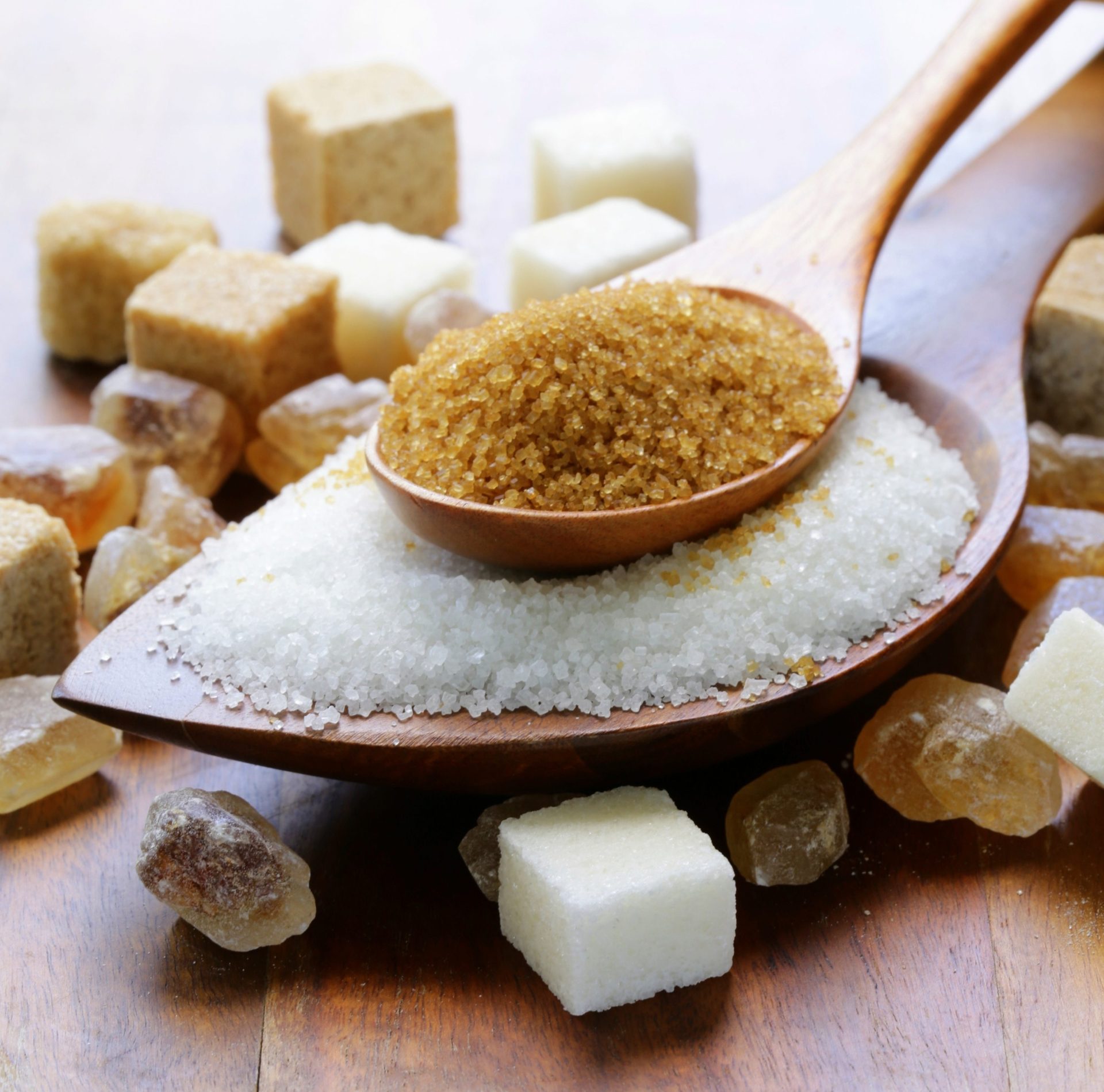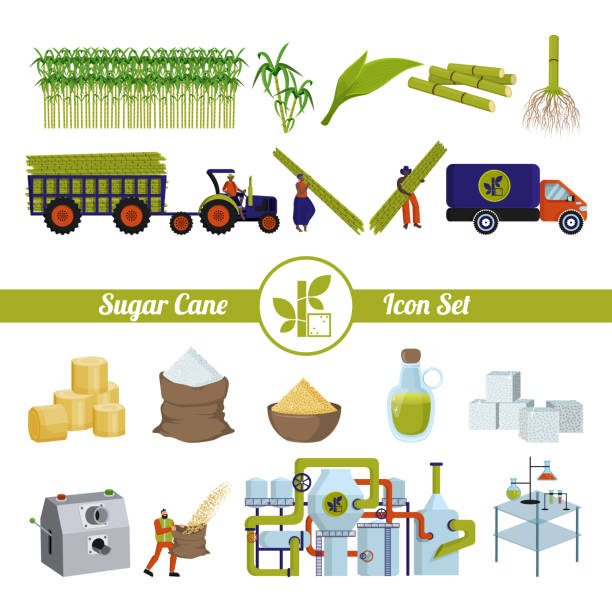Ways to Maximize the Culinary Potential of sugar cane products
A Deep Dive Into Sugar Cane: Insights on Production, Material, and Product Advancement
Sugar cane plays a critical duty in agriculture, underpinning economic climates in tropical regions. Its farming entails complex processes influenced by numerous environmental factors. Growers encounter considerable challenges, including climate modification and market variations. Innovations in item growth are emerging in response to advancing consumer needs. Comprehending these characteristics is vital for understanding the future of this vital crop and its influence on international markets. What lies in advance for sugar cane and its myriad applications?
The Importance of Sugar Cane in Global Farming
Sugar cane acts as an important crop in global agriculture, underpinning economic situations and food systems in lots of tropical regions. This functional plant is mainly cultivated for its high sucrose web content, which is fine-tuned right into sugar, an essential ingredient in countless foodstuff. Past sweetening, sugar cane is additionally important for generating biofuels, specifically ethanol, adding to energy sustainability.The financial significance of sugar cane includes employment, offering incomes for countless farmers and employees in handling facilities. In a number of nations, sugar cane farming and processing stand for substantial parts of farming GDP, affecting profession equilibriums and regional development.Additionally, sugar cane's versatility to numerous climates boosts its value as a plant, ensuring constant supply in worldwide markets. Its by-products, including molasses and bagasse, additionally expand its utility, making it a necessary element in food, power, and sector. In general, sugar cane remains a cornerstone of agricultural performance worldwide.
Farming Processes: From Planting to Harvest
Cultivating sugar cane involves a collection of distinct processes that ensure ideal development and yield. The farming begins with land prep work, where the soil is tilled to protect optimum aeration and drain. Following this, seed cane, which contains fully grown stalks, is selected and cut right into sections (sugar cane products). These sectors are after that grown in furrows, making sure correct spacing to permit sunlight and nutrient access.Once grown, watering systems are utilized to maintain appropriate wetness levels, as sugar cane flourishes in damp conditions. Weeding and parasite monitoring are vital during the growing period to reduce competitors for sources. Nutrient application, consisting of fertilizers, supports durable development. As the plants grow, keeping an eye on for conditions and parasites continues.Harvesting generally takes place 10 to 24 months post-planting, depending on the selection. The canes are reduced close to the ground, making sure marginal waste, and are quickly carried for refining to preserve sugar quality
Geographic Distribution of Sugar Cane Production
The geographic distribution of sugar cane production is mainly formed by details environment and dirt requirements. Significant producing countries, such as Brazil, India, and China, take advantage of tropical and subtropical climates that support the plant's growth. Recognizing these aspects offers insight right into the worldwide landscape of sugar cane growing.
Significant Making Countries
Although sugar cane is expanded in numerous areas worldwide, specific countries control production due to desirable environments and farming techniques. Brazil leads the international market, making up about one-third of overall production, many thanks to its substantial plantations and progressed farming methods. India complies with as a considerable manufacturer, gaining from both beneficial weather and a large domestic market. China and Thailand additionally rank among the leading producers, with well-established infrastructures sustaining their sugar markets. Other remarkable factors include the USA, Mexico, and Australia, each leveraging their one-of-a-kind agricultural systems to boost result. These countries play a crucial function in the sugar cane supply chain, influencing international rates and schedule
Climate and Dirt Demands
Perfect climate and dirt problems are critical for effective sugar cane production. Sugar cane prospers in tropical and subtropical regions, requiring warm temperatures in between 20 ° C and 30 ° C (68 ° F to 86 ° F) These plants need plentiful sunlight and rains, ideally in between 1,500 to 2,500 millimeters yearly, to assure peak growth. The dirt needs to be well-drained, abundant, and rich in natural matter, with a pH level ideally between 5.5 and 8.5. Sandy loam or clay loam soils are especially favorable to sugar cane growing, supplying essential nutrients and drain. Geographic distribution is greatly influenced by these aspects, with major production locations located in Brazil, India, and China, where ecological problems align with the plant's demands for development and return.

Challenges Encountered by Sugar Cane Growers
Sugar cane growers come across considerable challenges that influence advice their incomes. Environment modification introduces unforeseeable climate patterns, affecting crop yield and high quality. In addition, market value volatility produces monetary uncertainty, making complex lasting preparation for these agricultural producers.
Climate Modification Impacts

Exactly how do environment change impacts impact the feasibility of sugar cane farming? Increasing temperatures and erratic climate patterns significantly challenge sugar cane farmers. Raised warm can result in reduced returns, as the plants struggle to prosper in extreme problems. Furthermore, altered rains patterns lead to either droughts or too much flooding, both damaging to plant health. Insects and conditions are likely to proliferate in warmer climates, additionally threatening production. Soil degradation and salinization due to climbing sea degrees can lessen cultivable land. These weather changes urge farmers to adapt their techniques, commonly requiring financial investment in brand-new innovations and resistant crop selections. Ultimately, the sustainability of sugar cane growing depends upon dealing with these environment tests efficiently.

Market Value Volatility
Market price volatility offers substantial difficulties for sugar cane growers, affecting their economic stability and preparation. Variations in market value, driven by elements such as international supply and need, weather problems, and government plans, develop uncertainty for manufacturers. This changability makes it hard for cultivators to forecast incomes and manage business expenses effectively. Furthermore, when costs drop unexpectedly, many farmers might have a hard time to cover production expenses, bring about possible economic distress. To alleviate these threats, some growers transform to contracts or hedging approaches, yet these remedies might not come to all. Market rate volatility remains a relentless issue, influencing the total sustainability and earnings of sugar cane farming.
Understanding the Sugar Cane Supply Chain

Market Trends Influencing Sugar Cane Rates
The dynamics of sugar cane costs are affected by a selection of market trends that reflect more comprehensive financial problems and customer behaviors. Global need for sugar and sugar-related items plays an essential duty, with increasing rate of interest in organic and sustainably sourced products driving rates higher. Additionally, variations in oil rates affect the expense of production and transport, more affecting market rates. Weather condition patterns are one more considerable aspect; adverse problems can bring about decreased returns and enhanced costs. Profession policies, tolls, and worldwide contracts also shape the marketplace landscape, impacting supply chains and accessibility. Currency exchange rates can make complex international trade, influencing costs for both merchants and importers. Ultimately, changes in customer choices towards healthier alternatives may change demand patterns, creating a surge impact on sugar cane prices. Understanding these interconnected patterns is important for stakeholders in the sugar sector.
Developments in Sugar Cane Product Advancement
Numerous developments in sugar cane product advancement are reshaping the sector and increasing its applications. Scientists are exploring alternate usages past standard sugar, including biofuels, biodegradable plastics, and health supplements. Developments in chemical processing techniques have boosted content the removal of beneficial substances such as antioxidants and vitamins from sugar cane, promoting its usage in useful foods.Additionally, the growth my explanation of genetically modified sugar cane selections aims to enhance return and resistance to pests, while additionally boosting the nutritional account of the plant. Technologies in fermentation processes have actually led to the production of high-grade alcoholic drinks obtained from sugar cane, attracting a growing market for craft spirits.Moreover, lasting methods in growing and handling are obtaining grip, with an emphasis on decreasing environmental influences. These advancements not just produce new market chances however additionally promote a more lasting approach to sugar cane production, straightening with worldwide trends in the direction of green products.
Regularly Asked Questions
What Are the Environmental Impacts of Sugar Cane Farming?
The environmental influences of sugar cane farming include logging, loss of biodiversity, water air pollution from fertilizers and pesticides, dirt degradation, and greenhouse gas exhausts, every one of which significantly add to environmental inequalities and environment adjustment.
Exactly How Does Sugar Cane Cultivation Affect Local Economies?
Sugar cane cultivation greatly influences neighborhood economic situations by developing work, stimulating agricultural fields, and generating earnings for farmers. Nonetheless, it can also bring about economic reliance and fluctuations based on market needs and environmental conditions.
What Are the Key Pests and Diseases Affecting Sugar Cane?
The main pests impacting sugar cane consist of the sugarcane borer and aphids. Illness such as red rot and smut greatly effect return. Farmers should carry out incorporated pest monitoring strategies to mitigate these threats successfully.
Exactly How Is Sugar Cane Processed Into Different Products?
Sugar cane handling includes squashing the stalks to draw out juice, complied with by clarification, dissipation, and crystallization. This procedure returns raw sugar, molasses, and ethanol, each offering distinctive functions in various industries, from food to power.
What Are the Nutritional Aspects of Sugar Cane?
The nutritional elements of sugar cane consist of necessary vitamins and minerals, particularly B vitamins, calcium, and iron. It additionally has fiber, though mostly composed of sucrose, which provides power yet lacks considerable nutrients.